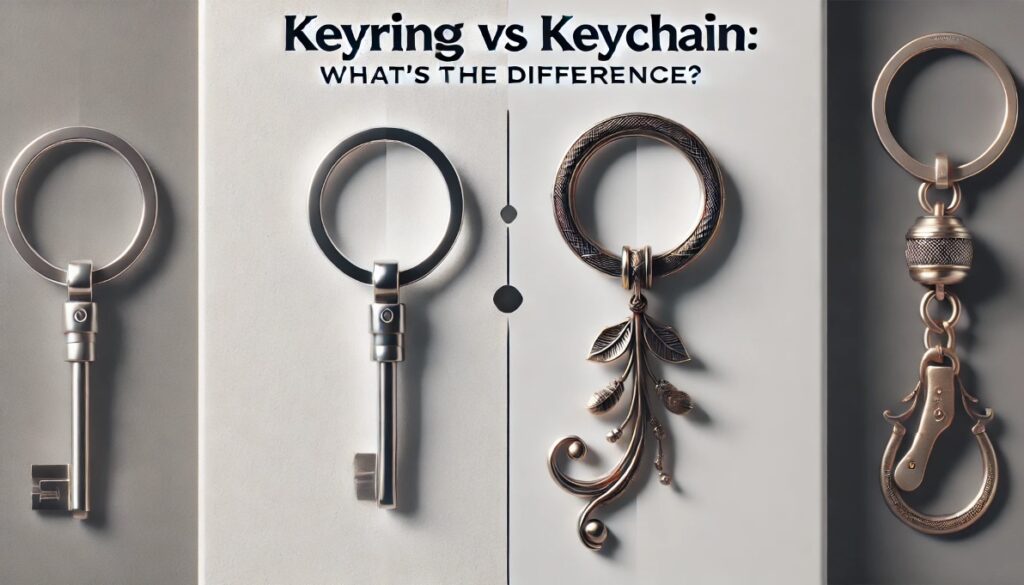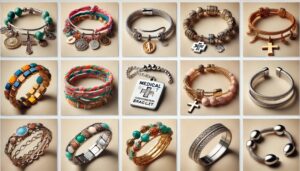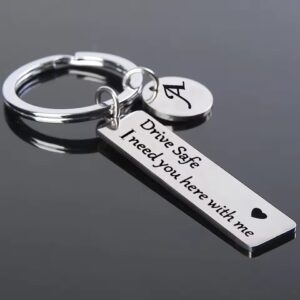Gifts Idea, Keyrings
Difference Between Keyring and Keychain Uses and Features
Have you ever paused, keys in hand, and considered the humble object holding them together? Most of us use them daily, almost without a second thought. We toss them in our bags, jangle them in our pockets, and rely on them to keep our essential keys organized and accessible. But have you ever stopped to think about whether you’re using a keychain or a keyring?
For many, the terms seem interchangeable, and in everyday conversation, they often are. However, delve a little deeper, and you’ll discover that while closely related, keychains and keyrings possess distinct characteristics, functionalities, and even histories. Understanding these subtle differences can not only refine your vocabulary but also help you appreciate the evolution of these indispensable everyday carry items and choose the best option to suit your needs and style.
This article will unlock the nuances between keychains and keyrings. We’ll explore their origins, dissect their defining features, compare their practical applications, and ultimately help you discern which is which. Get ready to see these everyday objects in a whole new light!
Defining the Keyring: Simplicity and Functionality at its Core
Let’s begin with the more fundamental of the two: the keyring. In its purest form, a keyring is exactly what its name suggests – a ring for keys. Imagine the most basic device for holding keys together. Chances are, you’re picturing a simple, often circular, band of metal. That, in essence, is the classic keyring.
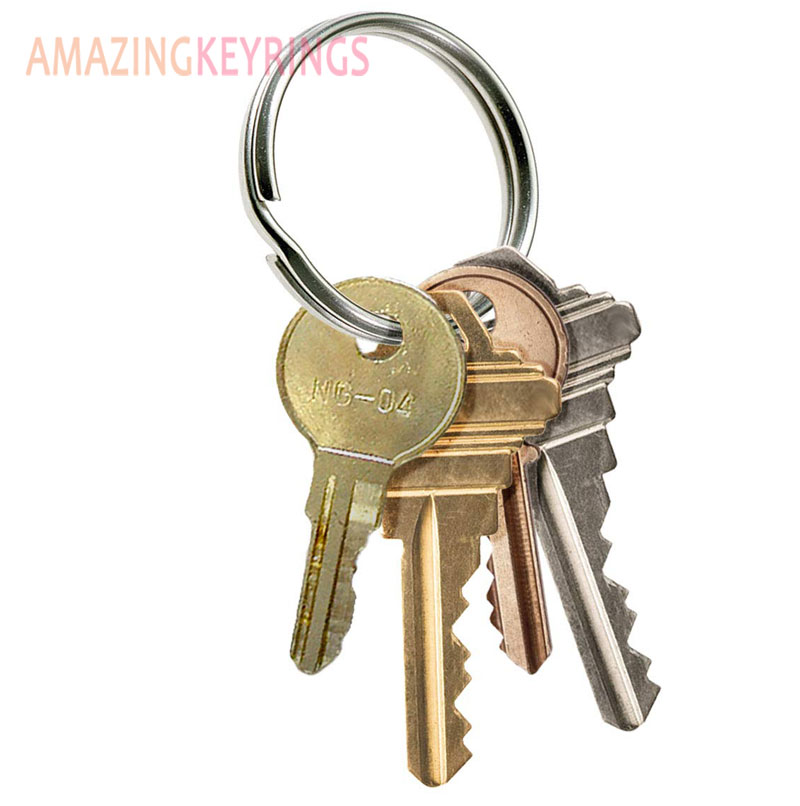
Function Over Frills:
The primary purpose of a keyring is purely functional: to organize and consolidate keys. Its design is driven by practicality. It’s meant to be a robust and reliable way to keep your keys from getting lost or scattered. Think of it as the minimalist approach to key management.
Design and Materials:
Keyrings are typically characterized by their simplicity in design. They are usually circular or oval, crafted from a single piece of sturdy metal, most commonly steel or brass. The metal is often polished or plated for durability and resistance to rust.
The key feature of a keyring is its split ring mechanism. This ingenious design allows you to easily add or remove keys. The split in the metal creates two overlapping edges, allowing you to slide a key onto the ring and have it securely held in place. This simple yet effective mechanism is the hallmark of a traditional keyring.
Historical Roots and Utilitarian Purpose:
The keyring likely predates the keychain in its widespread use. Historically, people needed a straightforward and dependable way to carry keys, especially larger, more ornate keys from older lock designs. The keyring offered a practical solution without unnecessary embellishment.
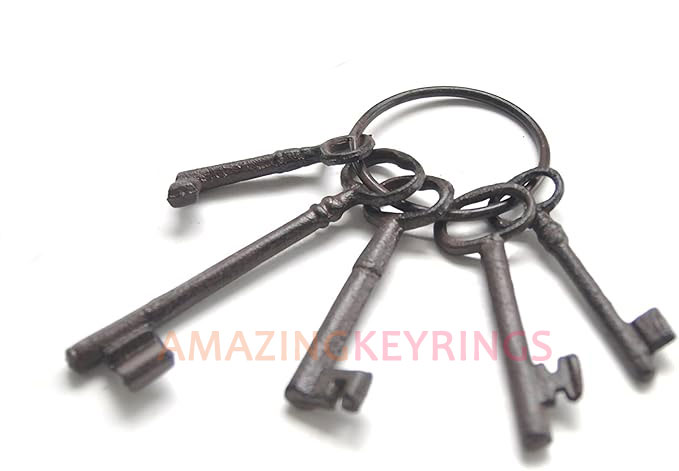
Think of janitors, caretakers, or anyone who historically carried a substantial number of keys. For them, a robust and functional keyring was essential. It was less about personal expression and more about efficient key management.
Key Characteristics of a Keyring:
- Primary Function: Organizing and holding keys together.
- Design: Simple, minimalist, typically circular or oval.
- Materials: Primarily metal (steel, brass, etc.).
- Key Feature: Split ring mechanism for adding/removing keys.
- Purpose: Utilitarian, practical key management.
- Aesthetic: Unadorned, functional, often understated.
The Evolution of the Keychain: Decoration and Functionality Combined
Now, let’s move on to the keychain. While it shares the keyring’s fundamental purpose of holding keys, the keychain represents an evolution of the concept, incorporating elements of decoration, personalization, and sometimes, additional functionality.
Beyond the Basic Ring:
A keychain essentially starts with a keyring but then expands upon it. It’s more than just a simple ring; it’s a keyring plus something else. This “something else” is where the key difference lies. It could be a decorative charm, a small fob, a leather strap, a novelty item, or even a tool.
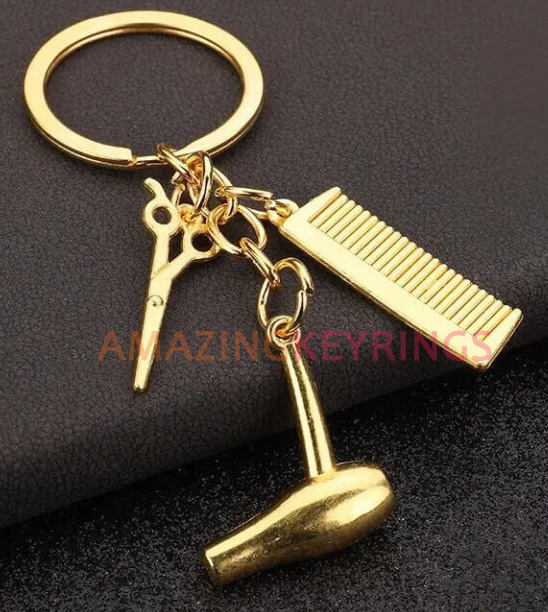
Design and Decorative Elements:
Unlike the understated keyring, keychains embrace design diversity and decorative elements. They come in a vast array of shapes, sizes, materials, and styles. You can find keychains made from plastic, leather, fabric, wood, rubber, and of course, metal – often incorporating multiple materials in a single design.
Keychains are often designed to be visually appealing and expressive. They can reflect your hobbies, interests, affiliations, or simply your personal style. Think of keychains featuring cartoon characters, sports team logos, miniature replicas of objects, inspirational quotes, or personalized engravings. The possibilities are virtually endless.
Added Functionality and Personalization:
Beyond decoration, many keychains incorporate additional functionalities. You might find keychains with built-in bottle openers, LED lights, miniature compasses, USB drives, or even small multi-tools. These added features enhance the practicality of the keychain, making it more than just a key holder.
Furthermore, keychains are often used as promotional items and personalized gifts. Companies use them to brand their businesses, sports teams sell them as merchandise, and individuals personalize them as thoughtful presents. This element of personalization and branding is far less common with basic keyrings.
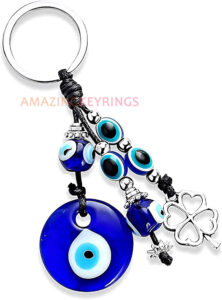
Key Characteristics of a Keychain:
- Primary Function: Holding keys together and decoration/added functionality.
- Design: Diverse, decorative, can be any shape or style.
- Materials: Wide range, including metal, plastic, leather, fabric, wood, rubber, etc.
- Key Feature: Includes a keyring plus decorative or functional attachments.
- Purpose: Decorative, personal expression, promotional, functional.
- Aesthetic: Varied, can be decorative, novelty, stylish, or personalized.
Key Differences at a Glance: Keyring vs. Keychain
To solidify the distinctions, let’s summarize the key differences in a clear, comparative format:
| Feature | Keyring | Keychain |
|---|---|---|
| Primary Function | Hold keys together | Hold keys together + decoration/added function |
| Design | Simple, minimalist, typically circular | Diverse, decorative, can be any shape or style |
| Materials | Primarily metal (steel, brass, etc.) | Wide range (metal, plastic, leather, fabric, etc.) |
| Key Feature | Split ring mechanism | Keyring + decorative or functional attachments |
| Purpose | Utilitarian, practical key management | Decorative, personal expression, promotional, functional |
| Aesthetic | Unadorned, functional, often understated | Varied, can be decorative, novelty, stylish, or personalized |
| Historical Context | Older, more traditional in origin | Evolved from the keyring concept, newer |
| Price Point | Generally less expensive | Can be more expensive due to materials/design |
When Does the Line Blur? Nuances and Overlap
While the distinctions we’ve outlined are generally accurate, it’s important to acknowledge that the line between “keyring” and “keychain” can sometimes blur in modern usage. Language evolves, and everyday terminology doesn’t always adhere to strict definitions.
Interchangeable Use in Casual Conversation:
In casual conversation, many people use “keychain” and “keyring” interchangeably, especially when referring to something simple that primarily functions as a key holder, even if it technically fits the definition of a keyring.
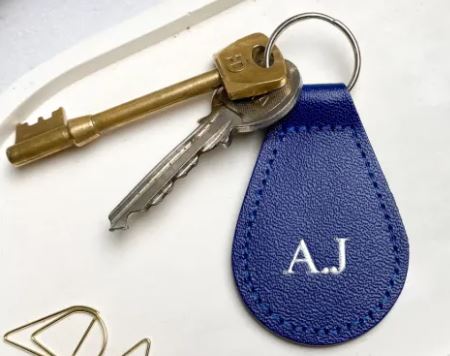
Simple Decorations on a “Keyring”:
Sometimes, you might find what is essentially a keyring with a very minor decorative element, like a small tag or a subtly colored piece of leather. In these cases, it might be debatable whether it truly crosses the threshold into being a “keychain.”
Focus on Functionality in “Keychains”:
Conversely, some items marketed as “keychains” might prioritize functionality over overt decoration. A keychain with a built-in bottle opener might be quite practical and less about pure aesthetics.
Context is Key:
Ultimately, the context often dictates how we use these terms. In a technical or descriptive setting, emphasizing the distinction is valuable. But in everyday conversation, using “keychain” as a general term for anything that holds keys together is widely understood and accepted.
Choosing the Right Option: Keyring or Keychain for You?
So, which should you choose – a keyring or a keychain? The answer depends entirely on your personal needs, preferences, and priorities.
For Pure Functionality and Minimalism: Opt for a Keyring
If your primary concern is simply to keep your keys organized and secure, and you prefer a minimalist, no-fuss approach, a keyring is the ideal choice. Its simplicity, durability, and straightforward functionality make it a reliable and practical option.
For Personal Expression, Decoration, and Added Features: Choose a Keychain
If you want to express your personality, add a decorative touch to your keys, or desire extra functionalities like a bottle opener or LED light, a keychain is the way to go. The vast variety of designs and styles ensures you can find a keychain that perfectly reflects your individual taste and needs.
Consider Your Lifestyle:
Think about your lifestyle and how you use your keys.
- Minimalist Lifestyle: A simple keyring might perfectly suit your needs.
- Expressive Style: A decorative keychain can be a subtle way to showcase your personality.
- Practical Needs: A keychain with added tools might be useful for your daily activities.
- Gift-Giving: Keychains make thoughtful and personalized gifts, while keyrings are more utilitarian.
Ultimately, Personal Preference Prevails:
In the end, the choice between a keyring and a keychain is a matter of personal preference. There’s no right or wrong answer. Both serve the fundamental purpose of holding keys, but they do so with slightly different approaches and aesthetics.
Conclusion: Appreciating the Subtle Differences in Everyday Essentials
While often used interchangeably, “keyring” and “keychain” are not quite the same thing. The keyring is the foundational element – a simple, functional ring designed to hold keys together. The keychain, on the other hand, builds upon this foundation by adding decorative and functional elements, transforming a purely utilitarian object into something that can also be a form of personal expression, a promotional tool, or even a multi-functional gadget.
Understanding this subtle difference allows us to appreciate the evolution of these everyday carry essentials. Whether you opt for the understated practicality of a keyring or the decorative flair of a keychain, both play a vital role in our daily lives, keeping our keys organized and accessible. So, the next time you reach for your keys, take a moment to consider – are you grabbing a keyring, or a keychain? You now have the knowledge to tell the difference!
